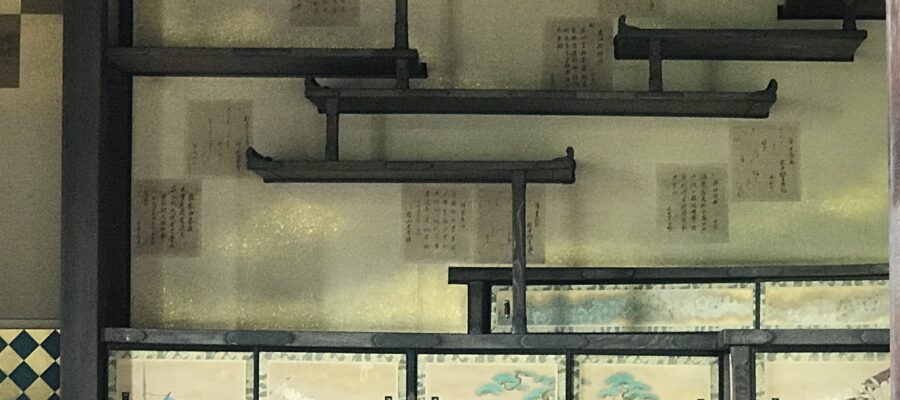【じゃらん】国内25,000軒の宿をネットで予約OK!2%ポイント還元!
後水尾上皇の皇女が住まわれた山荘
下離宮を出た後、今にも農家さんと出会いそうな耕作地の中に作られた道を歩いて中離宮に到着しました。この中離宮は、もともと後水尾上皇の皇女・朱宮光子(あけのみやてるこ)内親王の山荘として建てられたのち、上皇の死後、その霊を鎮めるためのお寺、林丘寺になっていたものを明治になって離宮に編入されました。
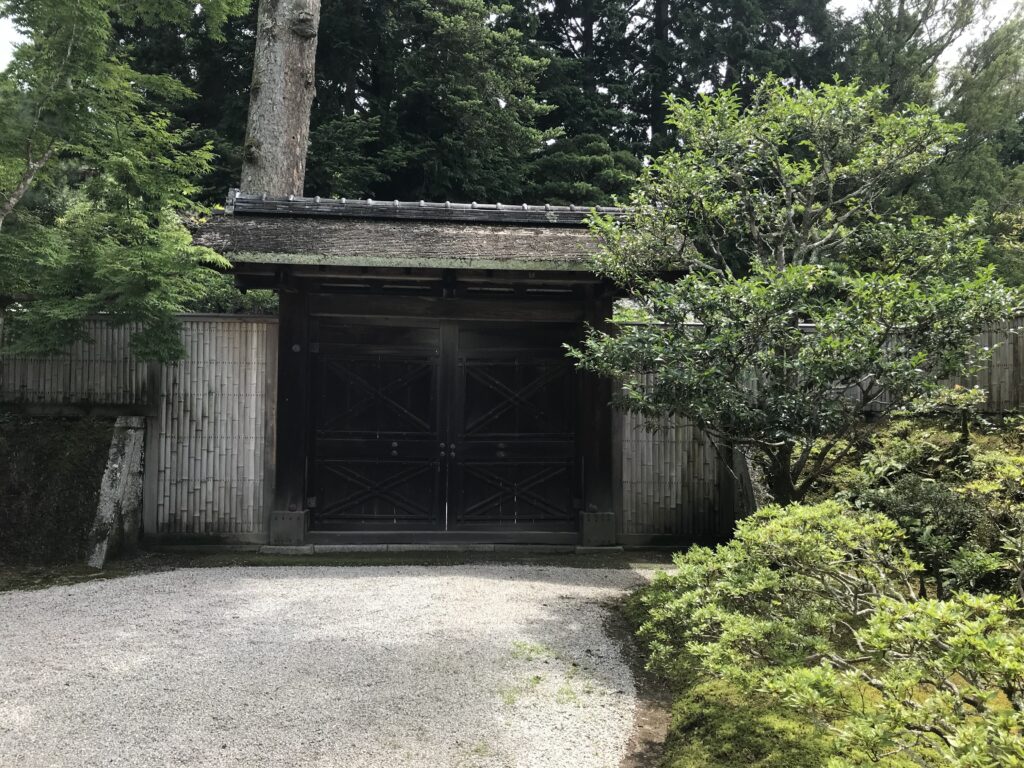
楽只軒と客殿
中離宮は楽只軒(らくしけん)と客殿があり、南に庭が造られています。建物の庭に面する側は幅広の縁側を設け、また床を低くしているため、そのまま庭とつながっているような雰囲気を作り出しています。
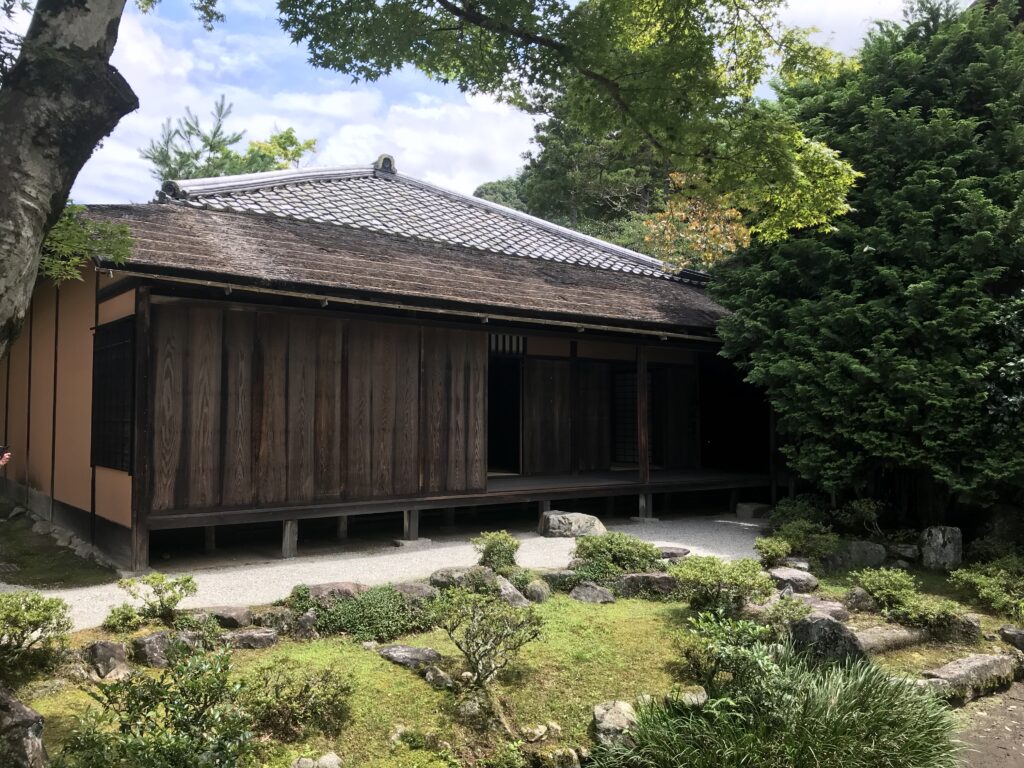
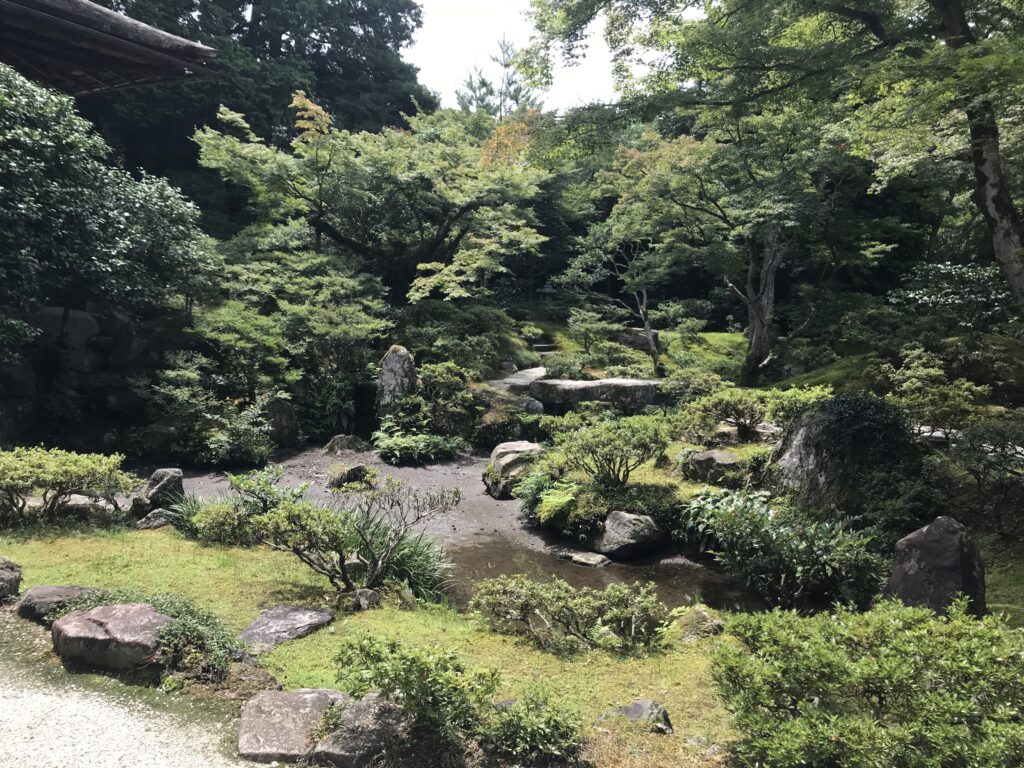
この楽只軒と、次に案内いただいた客殿とは工夫のある階段でつながれています。最初に杉戸の絵を見せてもらいました。写真(左)には祇園祭の鉾が二つ描かれています。描いたのは狩野敦信(あつのぶ)と言われています。写真(右)には鯉の絵で、筆者は不明ですが、板戸全体に描かれた白い網は円山応挙が描いたと伝わっているそうです。網だけ描くかなと少し疑問に思いました。
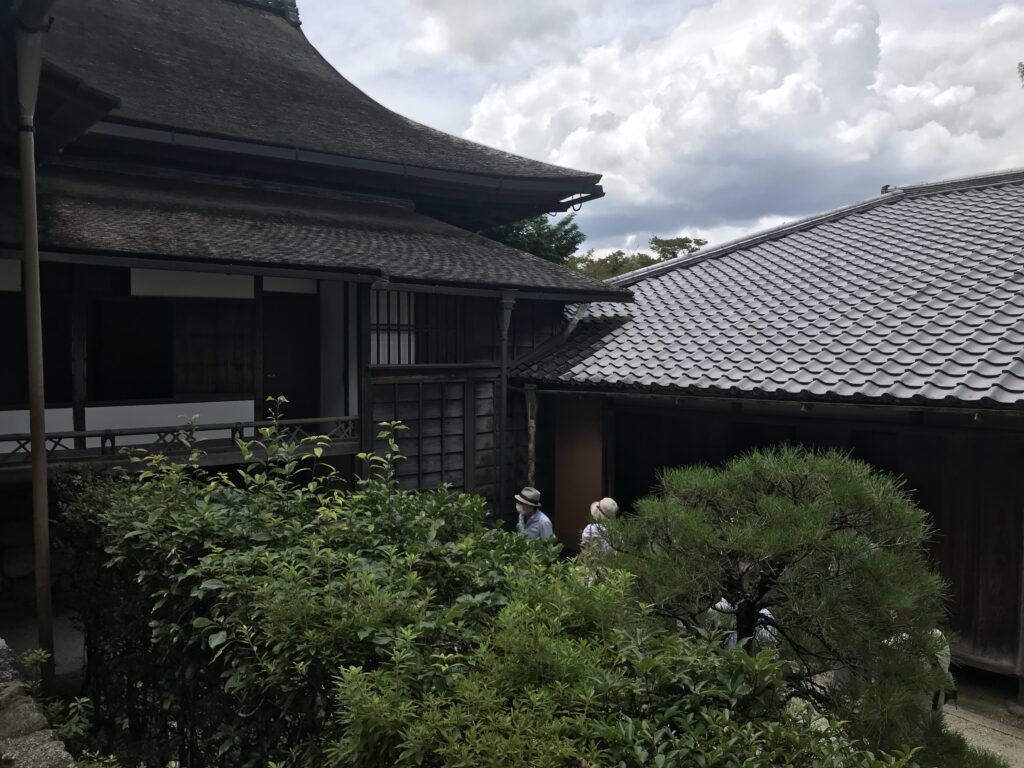
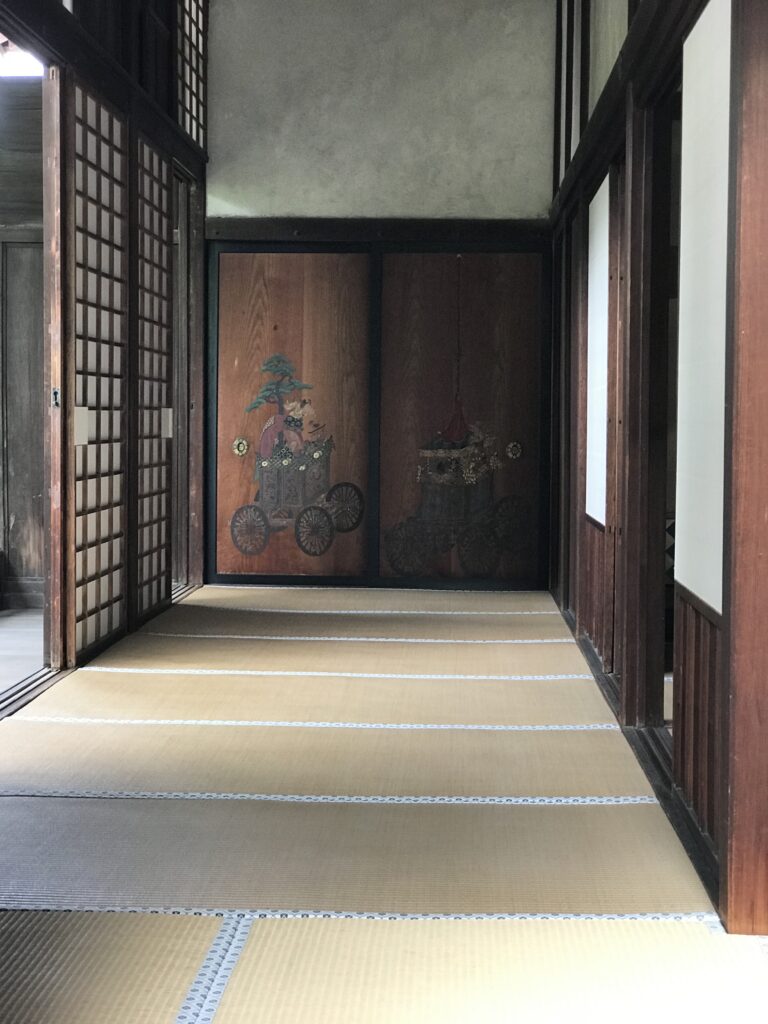
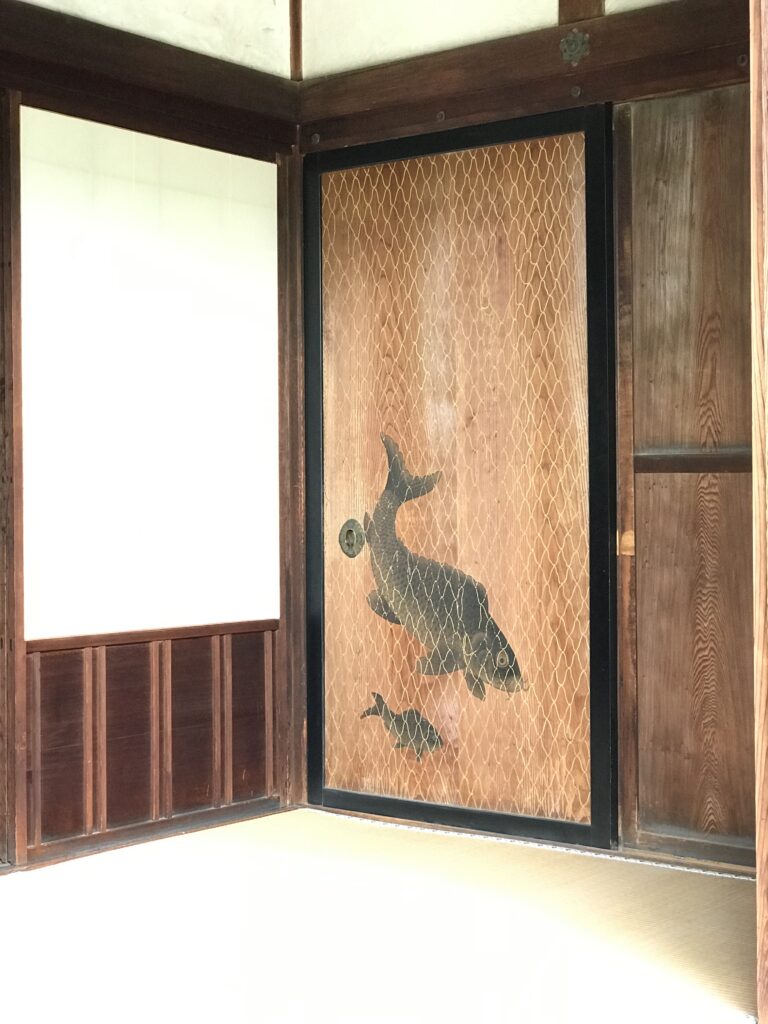
おだかやな金色に彩られた霞棚
次には「霞棚」と呼ばれる飾り棚です。互い違いに長さの異なる棚板が、いかにも霞にたなびいているように見えることから、「霞棚」と呼ばれるそうです。日本の昔の絵を見ると、雲の表現が真っすぐ横に伸びるよう描かれていますが、絵の雲にそっくりに見えます。よく見ると、地袋の引手は羽子板の形をしています。繊細な優しいデザインが部屋全体に溢れています。
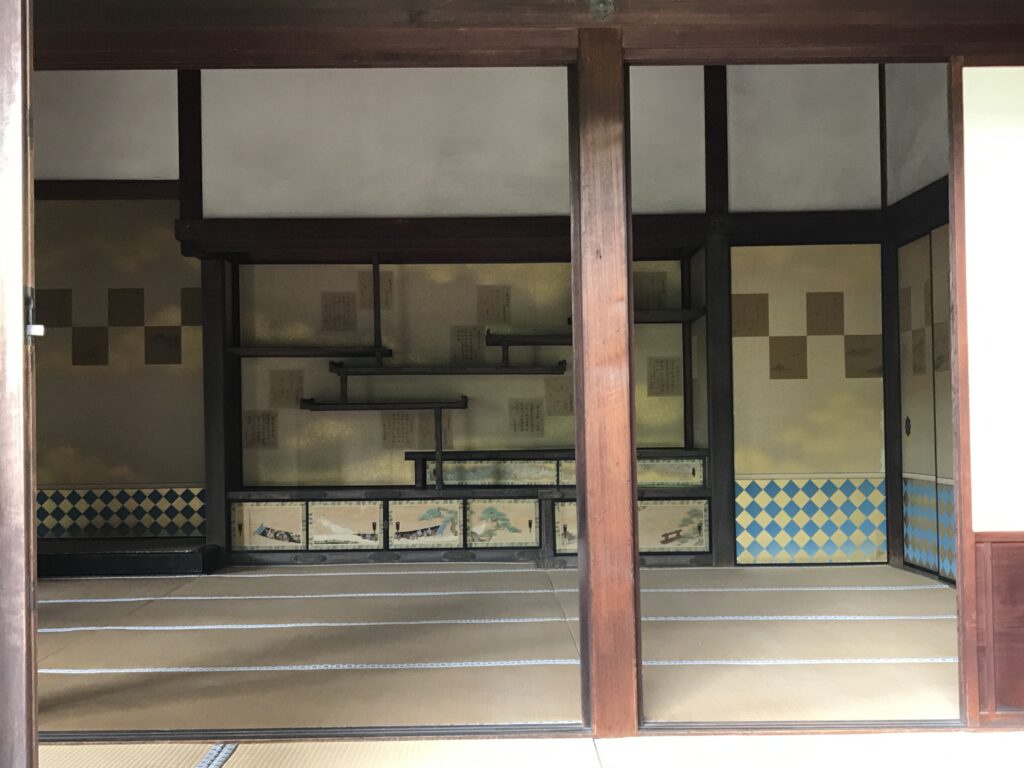
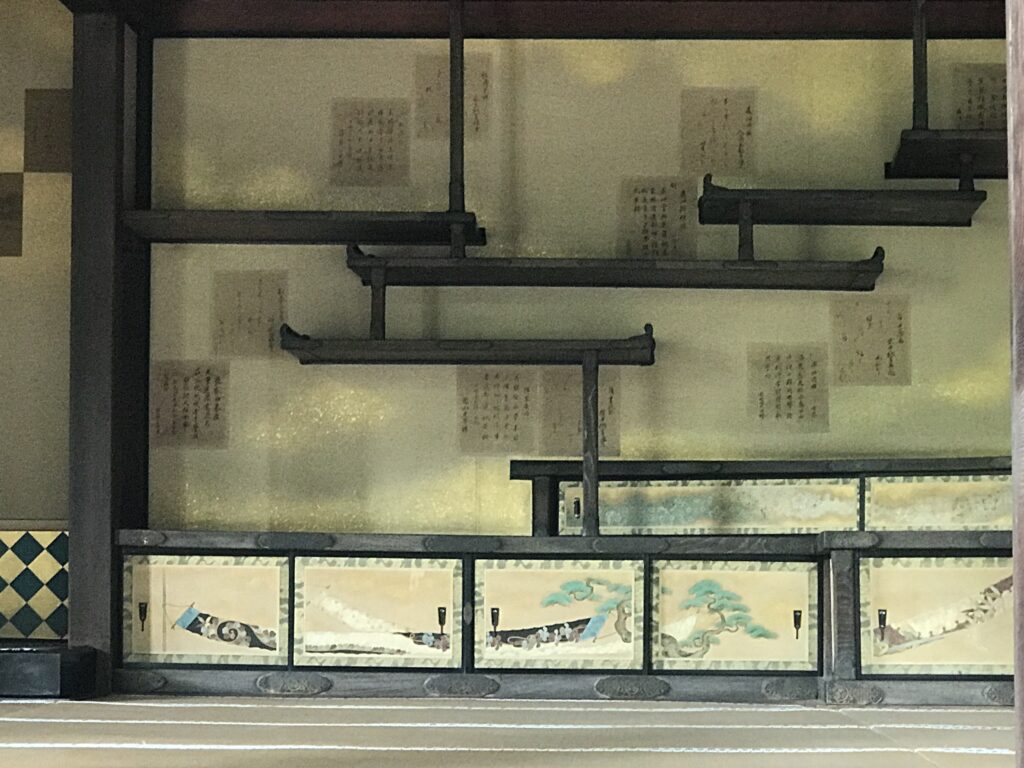
他の部屋も案内いただきましたが、金色が部分的に使われた襖も抑えた色合いで、落ち着いた雰囲気がします。宮中の雅さを感じられる空間でした。さあ、いよいよ上離宮の壮大な庭園に向かいます。(つづく)
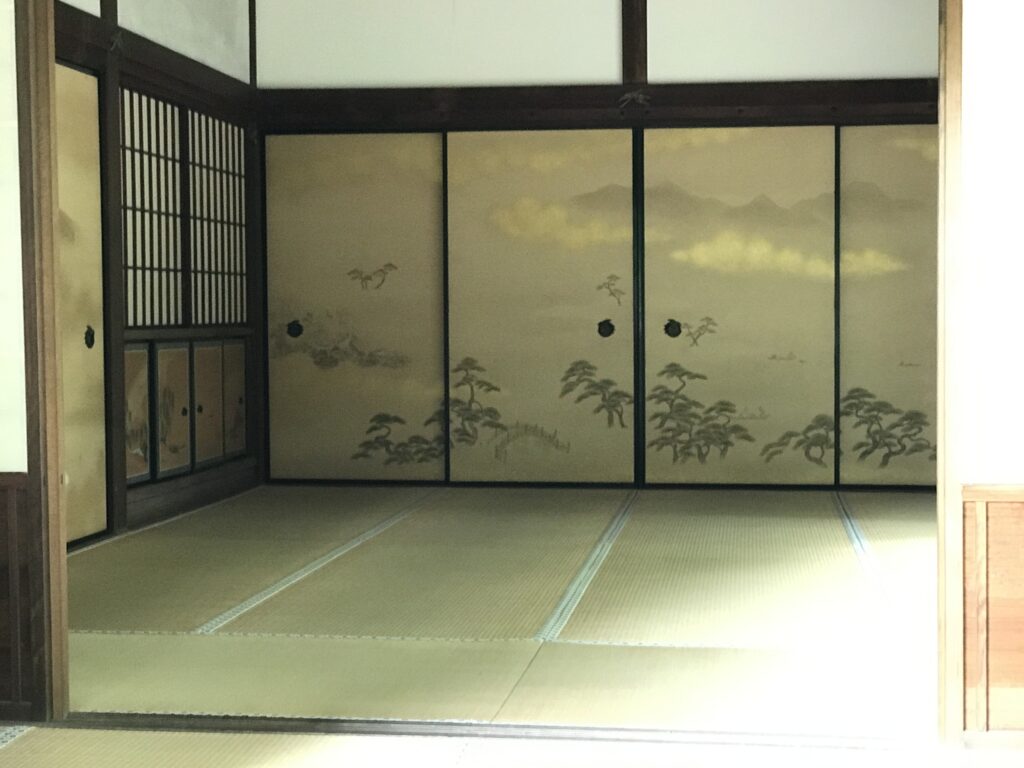
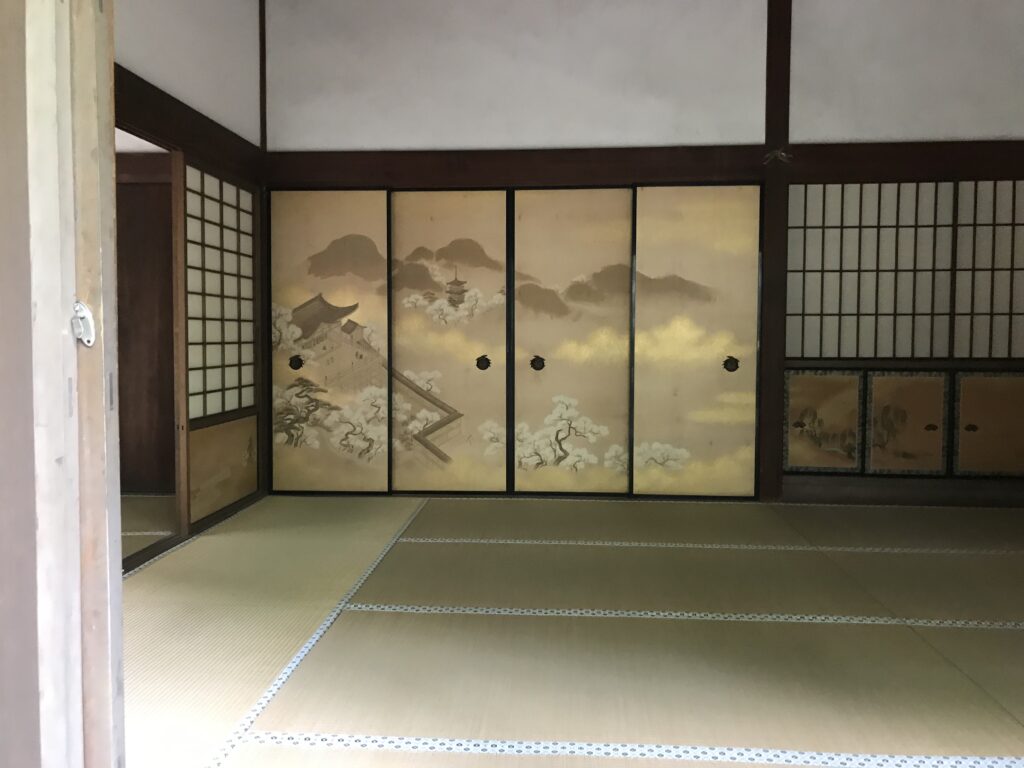
修学院離宮が紹介されている書籍
宮元健次さんの「日本庭園のみかた」に、修学院離宮に秘められた西洋の影響が解説されています。
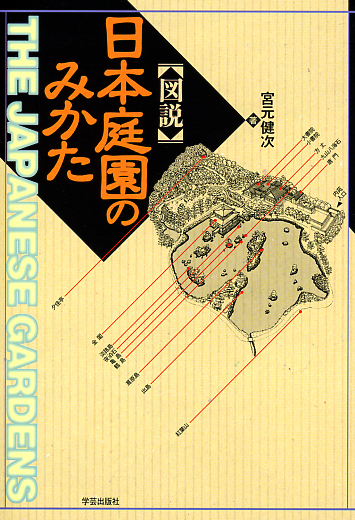
価格:2,090円
(2021/6/1 14:05時点)
感想(1件)
Shugakuin Rikyu (2) Naka-Rikyu
Villa where the princess of ex-Emperor Gomizuno lived
After leaving Shimo-Rikyu, I arrived at Naka-Rikyu by walking along a path built in a cultivated field where I were about to meet a farmer. This Naka-Rikyu was originally built as a villa for Princess Teruko Ake-no-Miya, the daughter of ex-Emperor Gonizuno. After the death of the ex-Emperor, the villa was turned into a temple, Rinkyu-ji, to repose his soul, and was incorporated into the detached palace in the Meiji period.
Rakushiken and Kyakuden
Naka-Rikyu consists of Rakushiken and Kyakuden, with a garden to the south. The side of the building facing the garden has a wide veranda and a low floor, creating an atmosphere as if it were directly connected to the garden.
This Rakushiken is connected to the Kyakuden (guest house) by an ingenious staircase. First, I was shown the paintings on the cedar door. The picture (left) shows two floats of the Gion Festival. The painter is said to be Atsunobu Kano. In the photo (right) is a painting of a carp. The author is unknown, but the white nets covering the entire door are said to have been painted by Maruyama Okyo. I wondered a little whether he would paint only the net.
Kasumidana (shelf of mist) painted in soft golden colors
Next is a display shelf called a “Kasumi-dana. It is called “Kasumi-dana” because the different lengths of the shelves, which are alternating, look as if they are fluttering in the haze. The clouds are depicted as stretching straight across in old Japanese paintings, and they look exactly like the clouds in the paintings. If you look closely, you can see that the pulls of the jibukuro are in the shape of a feather board. The entire room is filled with delicate and gentle designs.
I was also shown around the other rooms. The sliding doors with partial use of gold and restrained coloring gave the room a subdued atmosphere. It was a space where one could feel the elegance of the imperial court. Now, it is time to visit the magnificent garden of the Upper Detached Palace. (To be continued)
Shugakuin Rikyu (2) Naka-Rikyu
Villa où vivait la princesse de l’ex-empereur Gomizuno
Après avoir quitté Shimo-Rikyu, je suis arrivé à Naka-Rikyu en marchant le long d’un chemin construit dans un champ cultivé où j’allais rencontrer un fermier. Ce Naka-Rikyu a été construit à l’origine comme une villa pour la princesse Teruko Ake-no-Miya, la fille de l’ex-empereur Gonizuno. Après la mort de l’ex-empereur, la villa a été transformée en temple, le Rinkyu-ji, pour le repos de son âme, et a été incorporée au palais détaché à l’époque Meiji.
Rakushiken et Kyakuden
Naka-Rikyu se compose de Rakushiken et Kyakuden, avec un jardin au sud. Le côté du bâtiment qui fait face au jardin possède une large véranda et un plancher bas, créant une atmosphère comme s’il était directement relié au jardin.
Ce Rakushiken est relié au Kyakuden (maison d’hôtes) par un ingénieux escalier. On m’a d’abord montré les peintures sur la porte en cèdre. L’image (à gauche) montre deux chars du festival de Gion. On dit que le peintre est Atsunobu Kano. Sur la photo (à droite) se trouve une peinture représentant une carpe. L’auteur est inconnu, mais on dit que les filets blancs qui recouvrent toute la porte ont été peints par Maruyama Okyo. Je me suis un peu demandé s’il avait peint uniquement le filet.
Kasumidana (étagère de brume) peint dans des couleurs douces et dorées.
Ensuite, il y a une étagère d’exposition appelée “Kasumi-dana”. On l’appelle “Kasumi-dana” parce que les différentes longueurs des étagères, qui sont alternées, donnent l’impression qu’elles flottent dans la brume. Les nuages sont représentés comme s’étendant en ligne droite dans les anciennes peintures japonaises, et ils ressemblent exactement aux nuages des peintures. Si vous regardez de près, vous pouvez voir que les poulies du jibukuro ont la forme d’une planche à plumes. La pièce entière est remplie de motifs délicats et doux.
On m’a également fait visiter les autres pièces. Les portes coulissantes, l’utilisation partielle de l’or et les couleurs sobres donnaient à la pièce une atmosphère discrète. C’était un espace où l’on pouvait ressentir l’élégance de la cour impériale. Maintenant, il est temps de visiter le magnifique jardin du Palais détaché supérieur. (A suivre)
